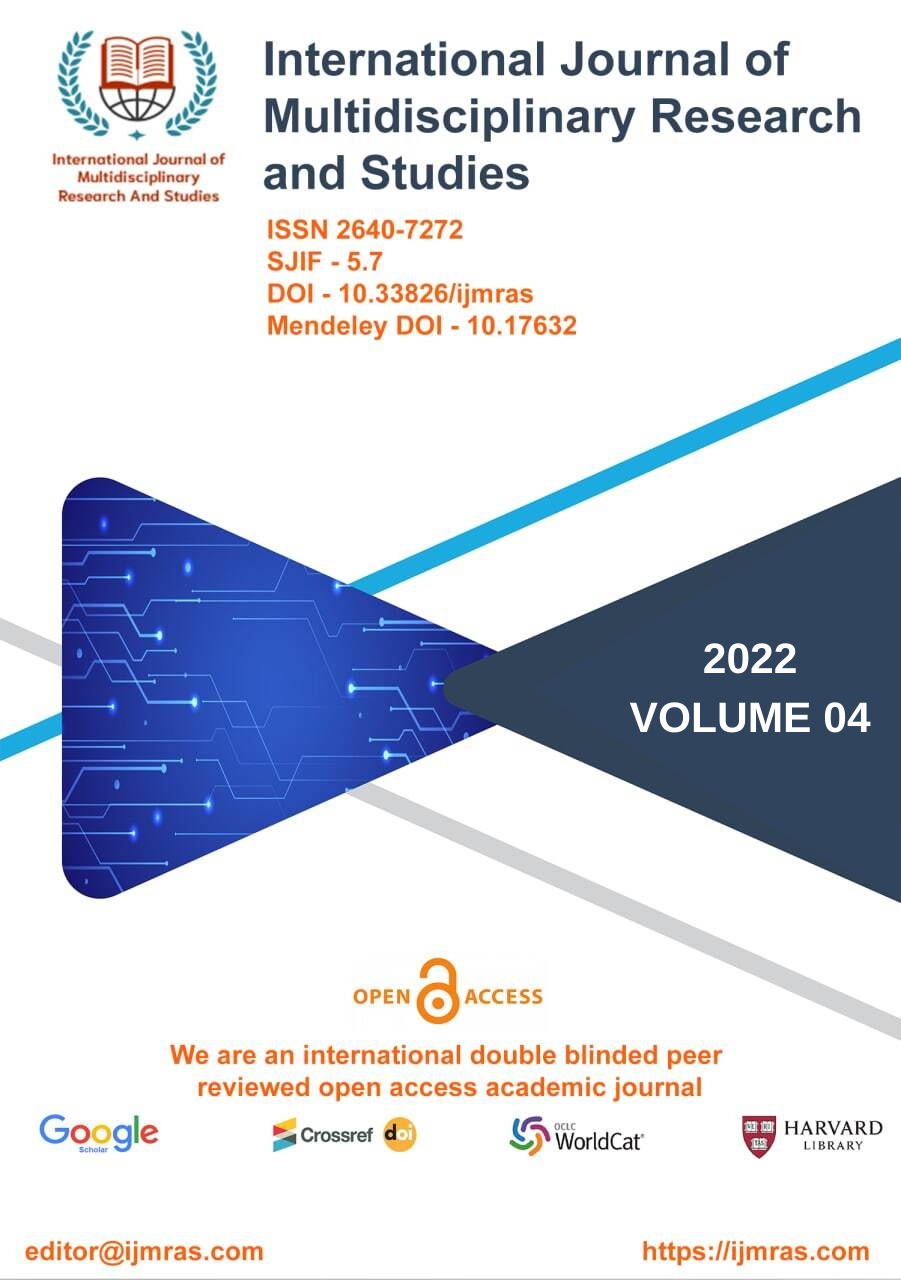PATIENTS UNDERGOING HEMISPHERECTOMY EXHIBIT CEREBELLAR REORGANISATION AND NEUROPLASTICITY
Abstract
The field of medicine was under the impression for a considerable amount of time that the brain was "hard-wired" with predetermined neural circuits, and that it remained unchanged in its structure and function We now understand that throughout a person's lifetime, the brain is constantly making adjustments and reorganizing itself through generating new neuronal connections. It is now common knowledge that the brain is intrinsically capable of altering in response to trauma, which makes it possible for at least some forms of behavioral compensation to take place.
Keywords
neuronal connections, intrinsically capable, behavioral compensationHow to Cite
References
Andersson J, Jenkinson M, Smith S. Non-linear registration, aka Spatial normalisation. FMRIB technical report TR07JA2. 2007.
Arrigoni F, Peruzzo D, Gagliardi C, Maghini C, Colombo P, Iammarrone FS, et al. Whole-Brain DTI Assessment of White Matter Damage in Children with Bilateral Cerebral Palsy: Evidence of Involvement beyond the Primary Target of the Anoxic Insult. AJNR.2016;37(7):.
Aurich Schuler T, Warken B, Graser JV, Ulrich T, Borggraefe I, Heinen F, et al. Practical Recommendations for Robot-Assisted Treadmill Therapy (Lokomat) in Children with Cerebral Palsy: Indications, Goal Setting, and Clinical Implementation within the WHO- ICF Framework. Neuropediatrics. 2015;46(4).
Bailes AF, Caldwell C, Clay M, Tremper M, Dunning K, Long J. Participation and community- based walking activity after neuroprosthesis use in children with hemiplegic cerebral palsy: A pilot study. J Pediatr Rehabil Med. 2017;10(2):.
Balzer J, van der Linden ML, Mercer TH, van Hedel HJA. Selective voluntary motor control measures of the lower extremity in children with upper motor neuron lesions: a systematic review. Dev Med Child Neurol. 2017;59(7):
Bar-Haim S, Harries N, Nammourah I, Oraibi S, Malhees W, Loeppky J, et al. Effectiveness of motor learning coaching in children with cerebral palsy: a randomized controlled trial. Clin Rehabil. 2010;24(11):
Beaulé V, Tremblay S, Théoret H. Interhemispheric control of unilateral movement. Neural Plast. 2012;2012(1):.
Beckung E, Carlsson G, Carlsdotter S, Uvebrant P. The natural history of gross motor development in children with cerebral palsy aged 1 to 15 years. Dev Med Child Neurol. 2007;49(10):
Bell KL, Davies PS. Energy expenditure and physical activity of ambulatory children with cerebral palsy and of typically developing children. Am J Clin Nutr. 2010;92(2):
Bennett CM, Miller MB. How reliable are the results from functional magnetic resonance imaging? Ann N Y Acad Sci. 2010;1191(1):
Birn RM, Bandettini PA, Cox RW, Shaker R. Event-related fMRI of tasks involving brief motion. Hum Brain Mapp. 1999;7(2):
Bloemen M, van Wely L, Mollema J, Dallmeijer A, de Groot J. Evidence for increasing physical activity in children with physical disabilities: a systematic review. Dev Med Child Neurol. 2017;59(10):
Borich MR, Brodie SM, Gray WA, Ionta S, Boyd LA. Understanding the role of the primary somatosensory cortex: Opportunities for rehabilitation. Neuropsychologia. 2015;79:
Bulea TC, Stanley CJ, Damiano DL. Part 2: Adaptation of Gait Kinematics in Unilateral Cerebral Palsy Demonstrates Preserved Independent Neural Control of Each Limb. Front Hum Neurosci. 2017;11(49):
Burke E, Dobkin BH, Noser EA, Enney LA, Cramer SC. Predictors and biomarkers of treatment gains in a clinical stroke trial targeting the lower extremity. 2014;45(8):
Burton H, Dixit S, Litkowski P, Wingert JR. Functional connectivity for somatosensory and motor cortex in spastic diplegia. Somatosens Mot Res. 2009;26(4)
License
Copyright (c) 2021 Rakesh Kumar

This work is licensed under a Creative Commons Attribution 4.0 International License.
Individual articles are published Open Access under the Creative Commons Licence: CC-BY 4.0.




